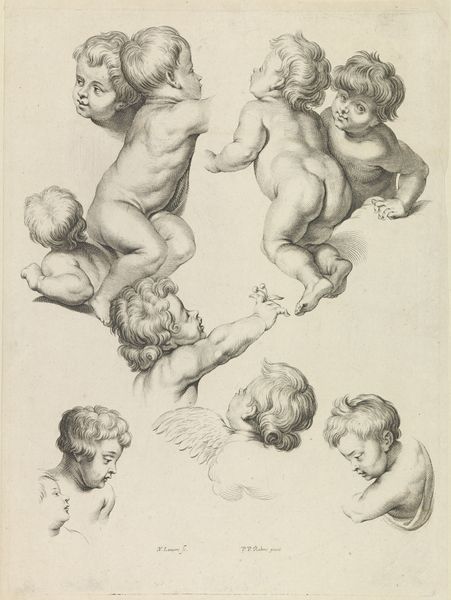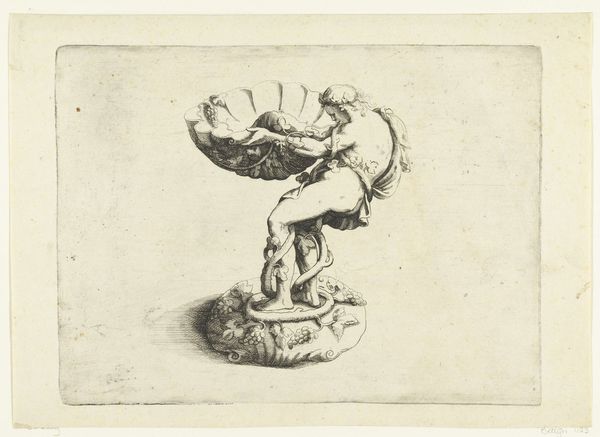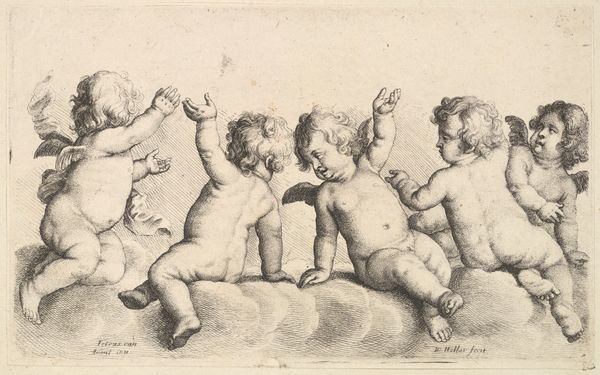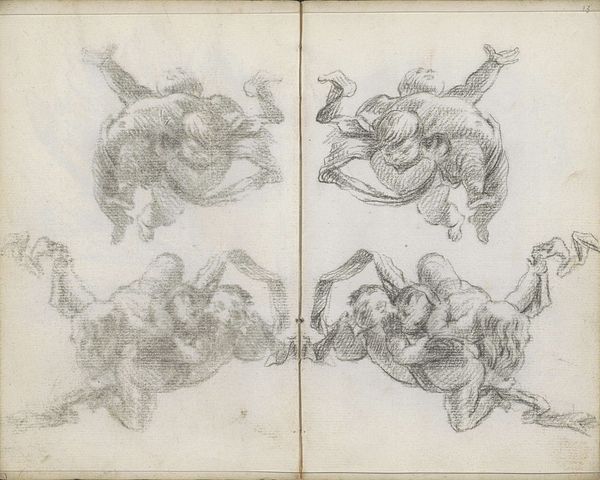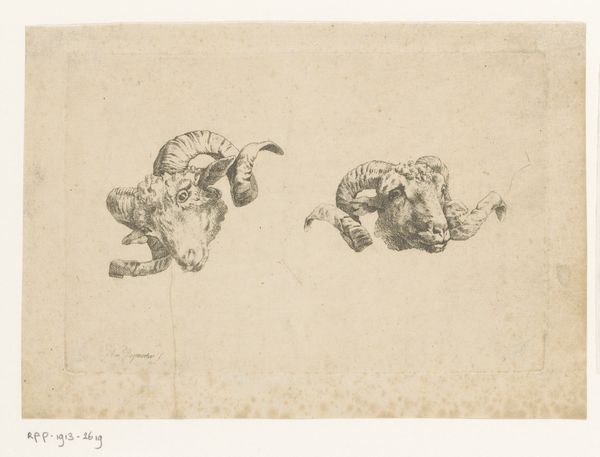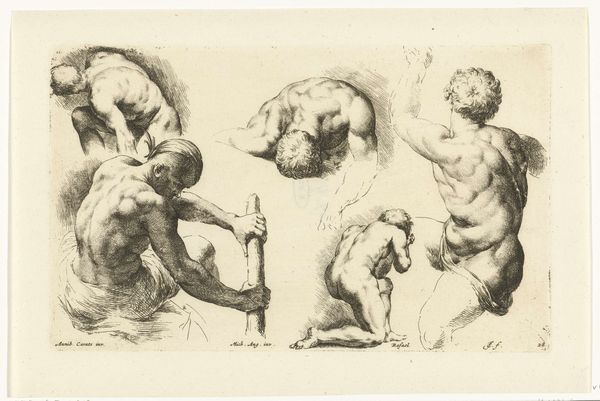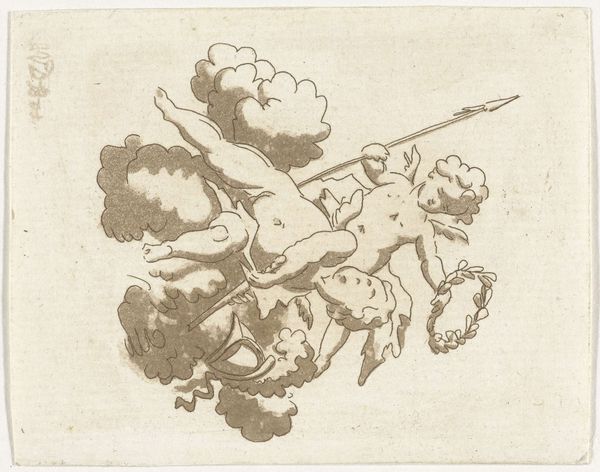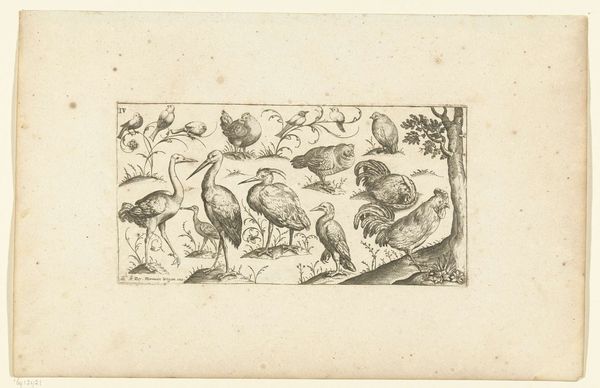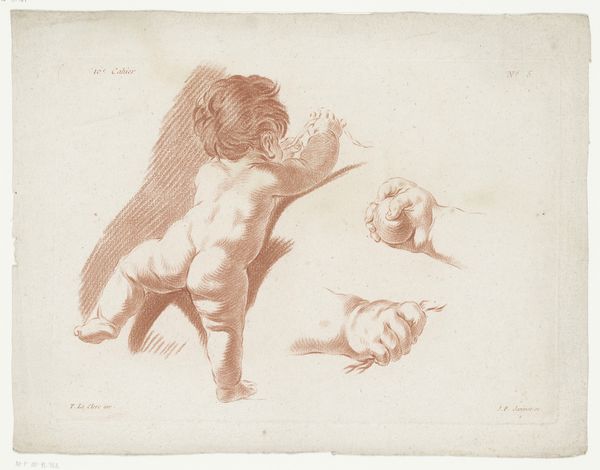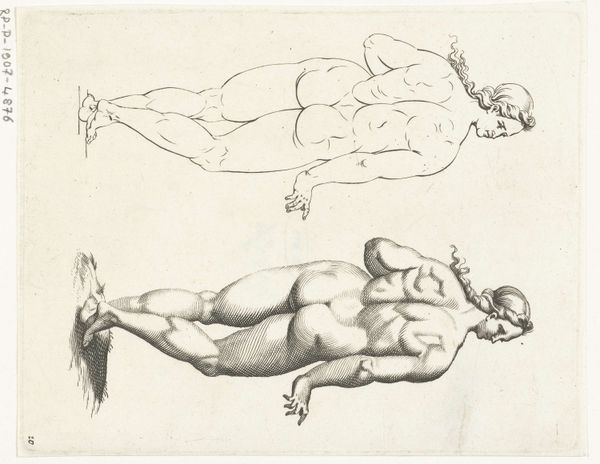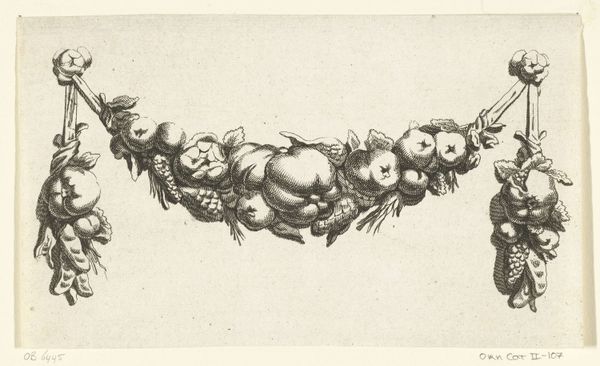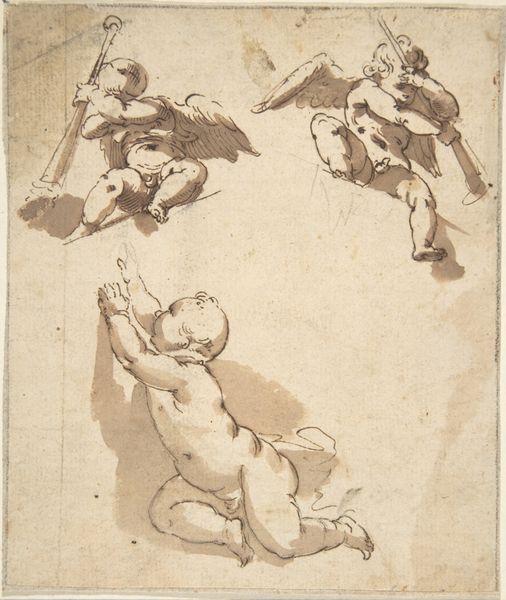
drawing, pen
#
drawing
#
baroque
#
pencil sketch
#
figuration
#
pencil drawing
#
pen
Dimensions: height 209 mm, width 166 mm
Copyright: Rijks Museum: Open Domain
Frederick Bloemaert’s "Vier zwevende kinderen," or "Four Floating Children," is a print made using the technique of engraving. Look closely and you'll see the subtle tonal variations and fine lines, achieved through the careful labor of incising an image into a metal plate. The plate is then inked and printed, transferring the image onto paper. In Bloemaert’s time, printmaking was crucial for disseminating images widely, acting as a reproductive technology. It transformed art from a unique, handmade commodity into something more accessible. The print displays an array of bodies and forms, each one rendered in meticulous detail through the engraver's burin. This engraving marks an important shift in the social life of images, reflecting the rise of mercantile capitalism and the expansion of artistic markets. These types of prints not only democratized art consumption, but also created a new kind of artistic labor.
Comments
No comments
Be the first to comment and join the conversation on the ultimate creative platform.
